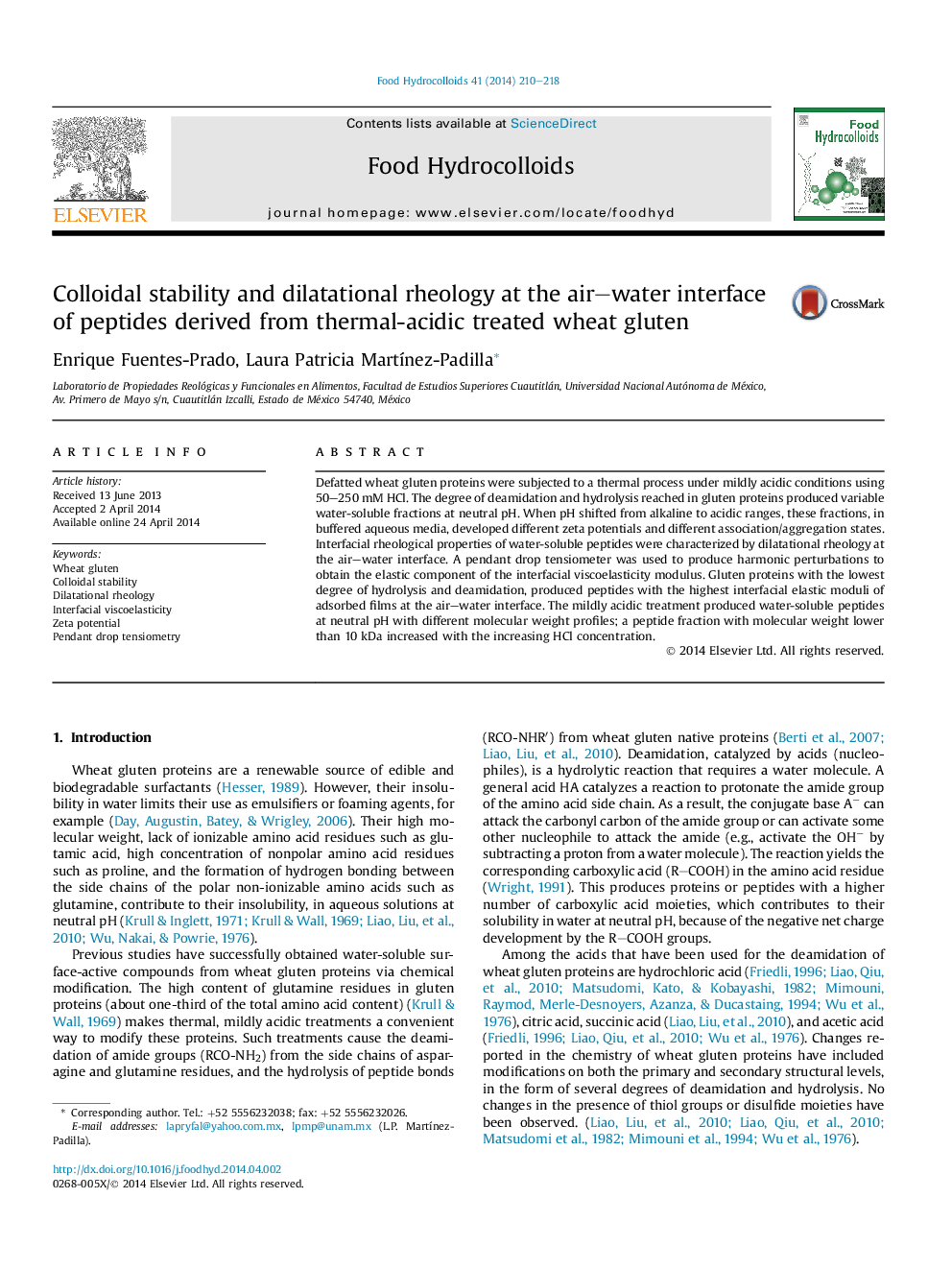| کد مقاله | کد نشریه | سال انتشار | مقاله انگلیسی | نسخه تمام متن |
|---|---|---|---|---|
| 605057 | 1454434 | 2014 | 9 صفحه PDF | دانلود رایگان |
• Water-soluble fractions from thermal acidic treated wheat gluten were obtained.
• Electrostatic repulsion and colloidal size distribution stabilize peptide solutions.
• Peptide-adsorbed films developed greater interfacial elasticity than SDS films.
• A major influence on interfacial rheology by peptide colloidal state was observed.
• Adsorption kinetics was less influenced by peptide colloidal state.
Defatted wheat gluten proteins were subjected to a thermal process under mildly acidic conditions using 50–250 mM HCl. The degree of deamidation and hydrolysis reached in gluten proteins produced variable water-soluble fractions at neutral pH. When pH shifted from alkaline to acidic ranges, these fractions, in buffered aqueous media, developed different zeta potentials and different association/aggregation states. Interfacial rheological properties of water-soluble peptides were characterized by dilatational rheology at the air–water interface. A pendant drop tensiometer was used to produce harmonic perturbations to obtain the elastic component of the interfacial viscoelasticity modulus. Gluten proteins with the lowest degree of hydrolysis and deamidation, produced peptides with the highest interfacial elastic moduli of adsorbed films at the air–water interface. The mildly acidic treatment produced water-soluble peptides at neutral pH with different molecular weight profiles; a peptide fraction with molecular weight lower than 10 kDa increased with the increasing HCl concentration.
Figure optionsDownload as PowerPoint slide
Journal: Food Hydrocolloids - Volume 41, December 2014, Pages 210–218
